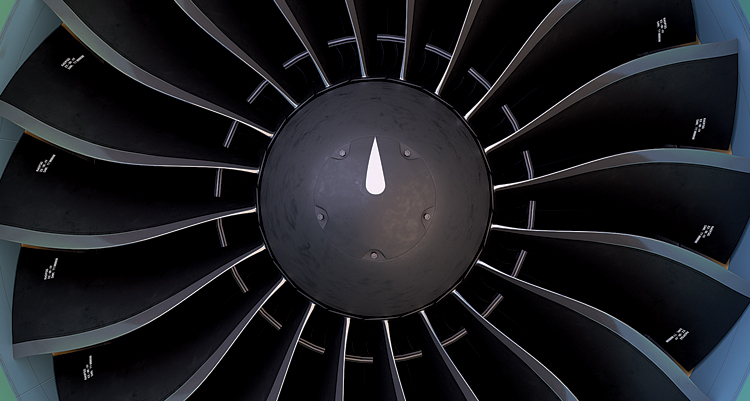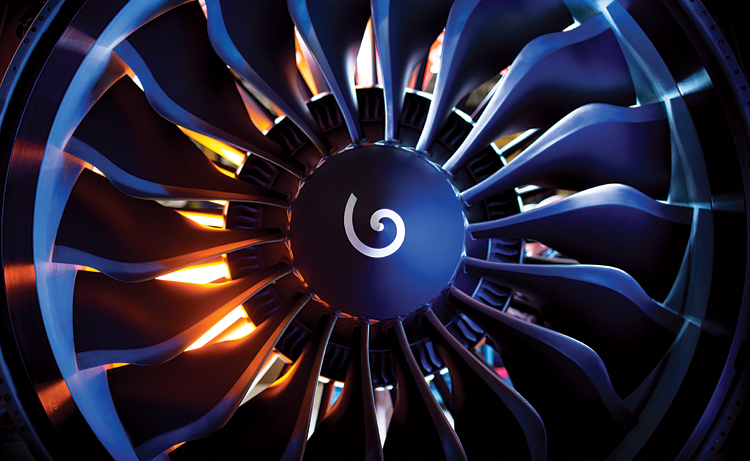INDIAN ARMED FORCES CHIEFS ON
OUR RELENTLESS AND FOCUSED PUBLISHING EFFORTS

SP Guide Publications puts forth a well compiled articulation of issues, pursuits and accomplishments of the Indian Army, over the years

I am confident that SP Guide Publications would continue to inform, inspire and influence.

My compliments to SP Guide Publications for informative and credible reportage on contemporary aerospace issues over the past six decades.
Innovation in Engine Technologies to Make Flying Green
The rising necessity of air travel and the constant pressure on the aerospace industry to make flying more sustainable for the environment, is driving manufacturers to innovate and develop engines that address this concern

Change has certainly arrived when it comes to the way we fly and further changes are already on high demand, in dire need and hence unavoidable. The aerospace industry has always remained under the radar to come up with new innovations. In addition to that, the drastic climate alterations being witnessed in the environment have put technological innovations that are also sustainable at the forefront of the industry.
Continuous attempts are about to come up with such creations, and one of the most significant innovations is being tried with jet engines while working on electric and hybrid propulsion. With better materials, more proficient shapes, improved coatings, etc. the engines are also being pursued to be lighter and stronger. Lighter engines further ensure that the aircraft structure can also be lighter since there is less weight to carry. Many big names in the industry are working on such electric and hybrid propulsion systems for aircraft, a few of which are already out in action. Some of these include:
ROLLS-ROYCE
Aspiring to set new benchmarks in efficiency, environmental performance and precision engineering, British multinational engineering company, Rolls-Royce is transforming flight. With its latest generation of engine, the Ultrafan, Rolls-Royce is aiming to take things a farther way. Enhanced with further technologies after Advance2 and Advance3, and innovative high-temperature materials, UltraFan features a new geared architecture (power gearbox introduced between the fan and intermediate pressure compressor) to ensure that the fan, compressors and turbines all continue to run at their optimum speed. This gearbox would also allow a much bigger fan, resulting in a more efficient engine.
By reconfiguring performance and efficiency, the UltraFan engines promise to conquer the challenges facing the aerospace industry and shape the future of aerospace.
By reconfiguring performance and efficiency, the UltraFan engines promise to conquer the challenges facing the aerospace industry and shape the future of aerospace. Thousands of strips of carbon fibre tape placed by giant robots structures a cylinder which is about 3.7m (almost 12ft) in diameter and forms the outer shell of the Ultrafan. The fan casing and blades made from carbon fibre are likely to save a 20% weight in comparison with earlier materials.
PRATT & WHITNEY
US-based Pratt and Whitney’s (P&W) PurePower Geared Turbofan (GTF) family of engines that was developed by P&W in partnership with NASA (National Aeronautics and Space Administration), has been one of the most notable creations. The GTF engines have been established to improve efficiency by over 16 per cent and increase fuel savings while reducing noise by almost 50 per cent. P&W is also working with NASA on the New Aviation Horizons initiative, through which a new generation of revolutionary “X-planes” are planned to be designed, built and tested with advanced technologies. Through the adoption of a higher-technology core of the PW1000G family than the core the engines already have, P&W is aiming for more efficient, sustainable air travel. This is also expected to enable airlines to open new routes and fly more people farther, with less fuel – and much lower noise, resulting in quieter communities, quieter flights, cleaner air and economic development.

In another partnership, the Ultra-High Bypass Advanced Nacelle Technologies partnership, UTC Aerospace Systems, Boeing and P&W will look to build on the already achieved innovations, and develop a new generation of GTF engines that will be even more efficient and quiet. The goal is to improve efficiency by another 10 per cent above the 16 per cent efficiency improvement from the first generation GTF engines.
REACTION ENGINES
UK based manufacturer, Reaction Engines is planning to entirely alter a step change in propulsion through its rocket engine, Sabre. The company is aiming for a speed of Mach 5 (five times the speed of sound). At this speed, the air coming into the engine can go up to the temperatures as high as 1,000C. Such high temperatures can adversely impact the engines. For this, Reaction has developed a cooling system (being called as a pre-cooler) which can cool the incoming air in a fraction of a second. Made from miniature tubes with a thickness less than 1mm, the pre-cooler can pipe coolant under high pressure through the system, and shoot heat away. Reaction Engines are planning to start building the Sabre engine this year and test it in 2021. The pre-cooler is also being said to be of use for conventional jet engines to make them more efficient, and the idea is being tested with Rolls-Royce.

SABRE – Synergetic Air Breathing Rocket Engine – is a new class of engine for propelling both high speed aircraft and spacecraft. These engines are unique in delivering the fuel efficiency of a jet engine with the power and high speed ability of a rocket. Holding the promise to revolutionize travel around the globe, and into orbit, SABRE engines are capable of Mach 5.4 in air-breathing mode and Mach 25 in rocket mode for space flight.
CFM INTERNATIONAL
One of the leading engines suppliers globally, CFM International’s advanced LEAP engine has continued to set an industry standard for fuel efficiency as the fleet continues a rapid build up in commercial aviation, with its fleet logging nearly five million engine flight hours through May 2019. The first LEAP-powered commercial flight happened in 2016 on a Pegasus Airlines flight. Since then it has only enhanced its fleet and operators.
The LEAP engine has the second generation Twin-Annular, Pre-Mixing Swirler Combustor (TAPS II). The LEAP nozzle premixes fuel and air to provide lean burn combustion, unlike traditional combustors that mix these elements inside the combustion chamber. The LEAP engine has continued to build on the legacy and LEAP operators have observed as much as 15 per cent improvement in fuel consumption and CO2 emissions as well as reduced NOx emissions alongside lowered engine noise.
While the above mentioned are only a couple of companies working towards a sustainable flying, there are many more who are making a similar effort as the rising environmental concerns have put the aerospace industry under pressure to decrease its environmental impact. In the times to come, the airline traffic is only going to increase and very rapidly, hence the future awaits a more efficient aircraft.
Be it with the designs, with the material, with the sound and emission, or de-carbonization, the industry is looking for all kinds of incremental changes in the airline business that can make a big difference because meeting the demands of the present while also addressing the needs of the future is what forms the basis of this industry.





